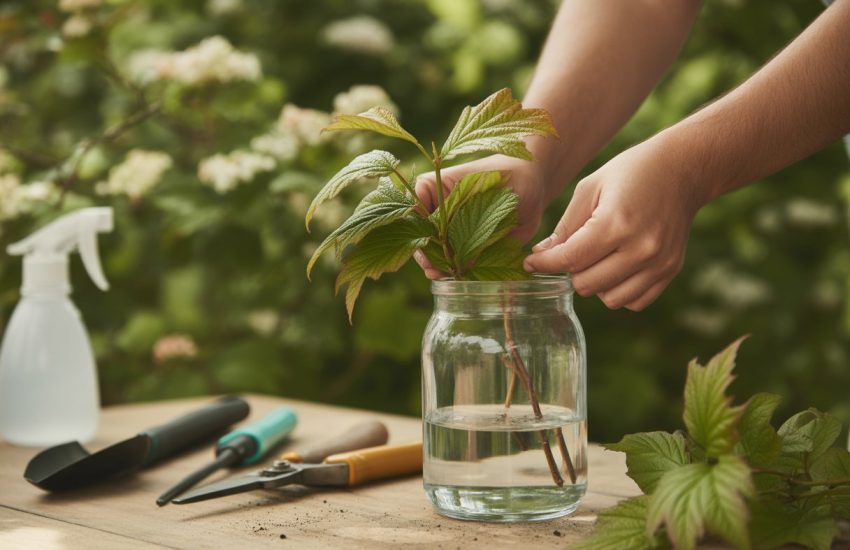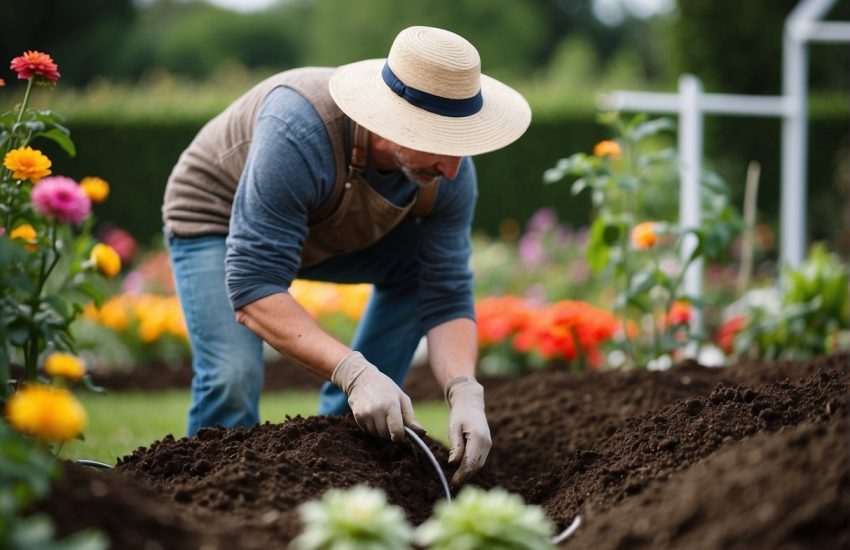Desert Rose Plant Care: Tips and Tricks for a Healthy Plant
The desert rose, also known as Adenium obesum, Sabi star, or impala lily, is a stunning plant that is native to arid regions of Africa and Arabia. This plant is a popular choice among gardeners due to its striking appearance and relatively low maintenance requirements. However, proper desert rose plant care is essential to ensure that it thrives in your home or garden.
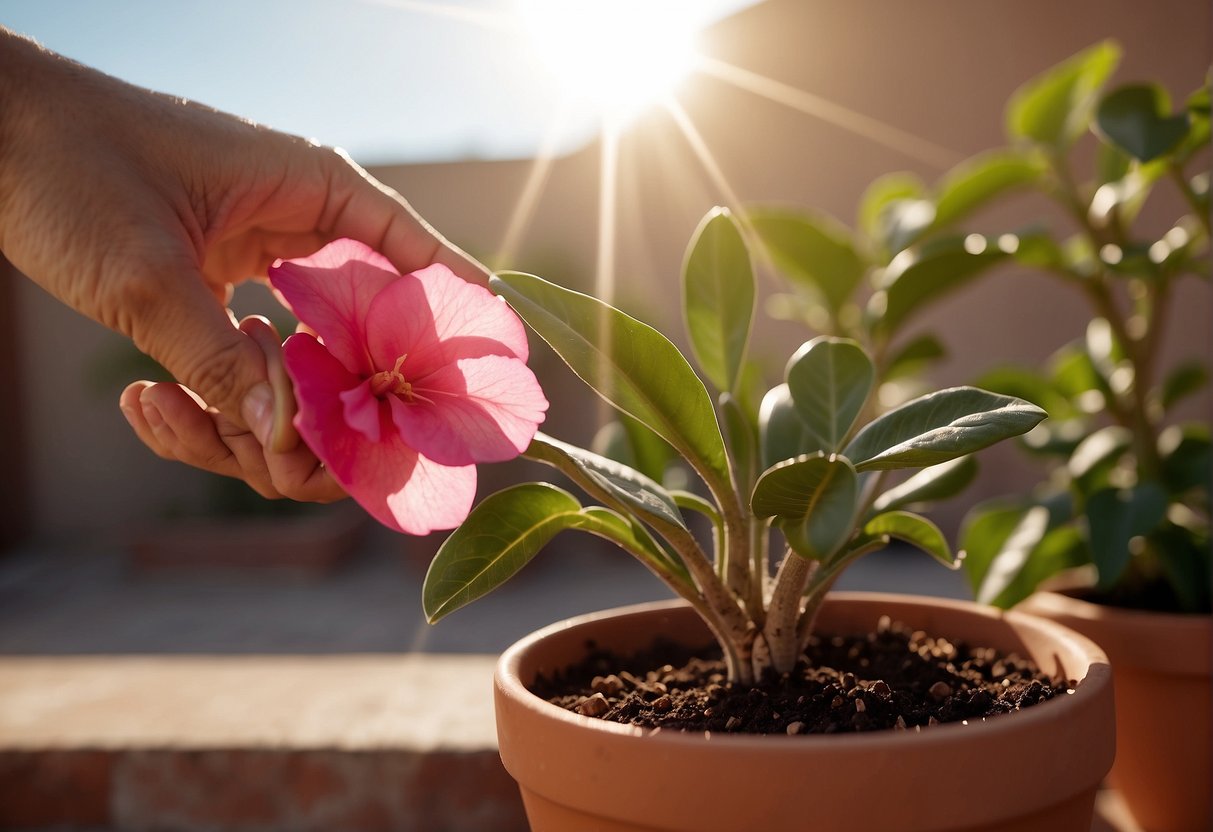
One of the most important aspects of desert rose plant care is providing the right growing conditions. These plants require plenty of sunlight and well-draining soil to thrive. They are also sensitive to cold temperatures, so it is important to keep them in a warm environment. In addition, desert roses require regular watering during the growing season, but they should be allowed to dry out between watering sessions to prevent root rot.
Overall, desert rose plant care is relatively straightforward as long as you provide the right growing conditions and follow a few basic guidelines. With proper care, your desert rose can be a beautiful addition to your home or garden for years to come.
Optimal Growing Conditions
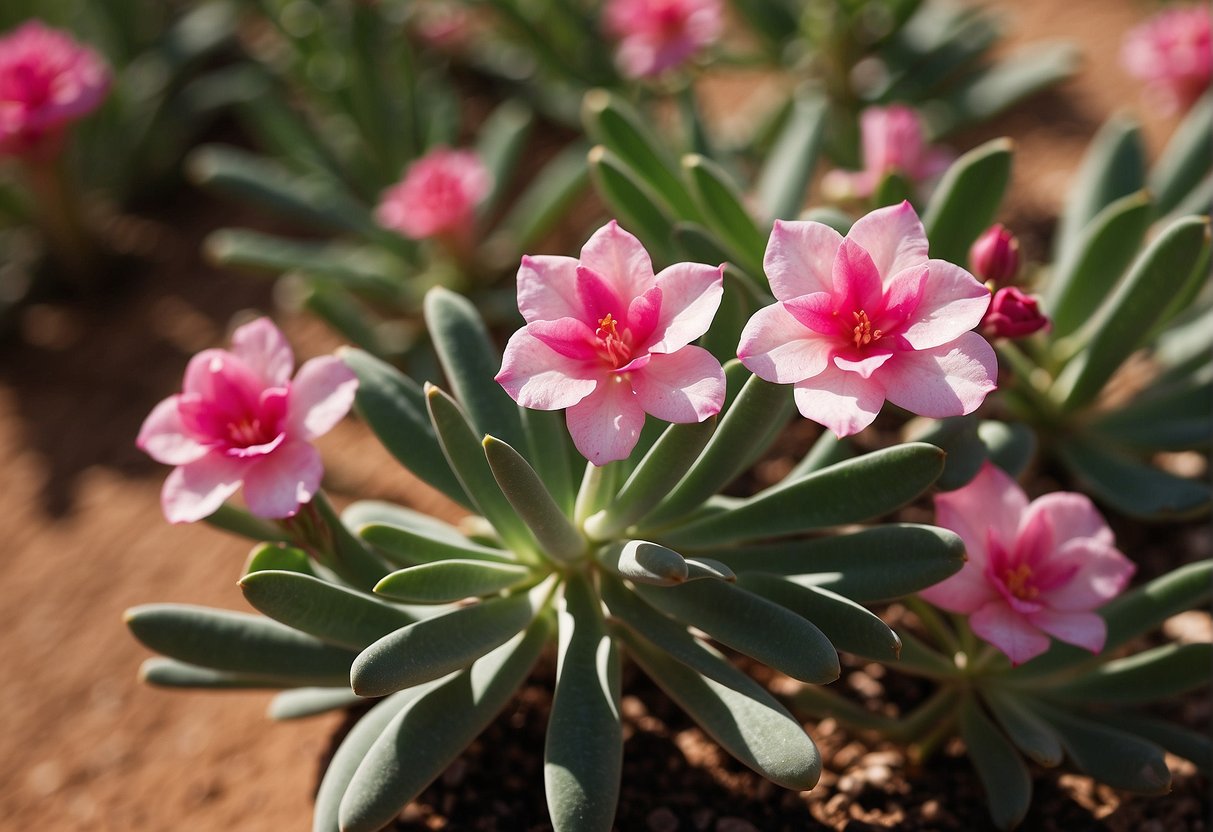
Light Requirements
Desert rose plants require full sun to thrive. They need at least 6 hours of direct sunlight per day to grow and bloom properly. If you are growing them indoors, place them near a south-facing window where they can get the most amount of light. If you notice that the leaves are turning yellow or falling off, it may be an indication that the plant is not getting enough light.
Temperature and Humidity
Desert rose plants prefer warm temperatures and low humidity. They can tolerate temperatures as low as 50°F (10°C) and as high as 90°F (32°C). However, they do not like sudden temperature changes or drafts. Keep the plant in a place where the temperature is consistent. Desert rose plants do not require high humidity, so avoid misting the leaves or keeping them in a humid environment.
Soil and Watering Needs
Desert rose plants prefer well-drained soil that is slightly dry. They do not like to sit in wet soil, so make sure the pot has drainage holes. Use a soil mix that is designed for cacti and succulents. During the summer and fall, water the plant thoroughly and then allow the soil to dry out completely before watering again. In the winter and spring, reduce watering to once every two weeks. Be careful not to overwater the plant, as this can lead to root rot.
By providing the optimal growing conditions, your desert rose plant will thrive and produce beautiful blooms.
Planting and Repotting
Choosing the Right Pot
When it comes to planting desert rose plants, it is important to choose the right pot. The pot should be large enough to accommodate the plant’s root system and allow for growth, but not so large that it retains excess moisture. A pot with drainage holes is also essential to prevent water from accumulating in the soil and causing root rot.
Soil Mix and Transplanting
Desert rose plants prefer well-draining soil that is low in organic matter. A mix of cactus soil and perlite or gravel is ideal for providing the proper drainage and aeration. When transplanting, gently loosen the roots and remove any dead or damaged ones before placing the plant in the new pot. Fill in around the roots with the soil mix, being careful not to pack it too tightly.
It is recommended to repot desert rose plants every 2-3 years to prevent the soil from becoming compacted and to provide fresh nutrients. Repotting should be done in the spring or early summer when the plant is actively growing. When repotting, choose a pot that is only slightly larger than the current one to prevent overwatering and root rot.
Maintenance and Care
Desert rose plants require minimal maintenance but still need proper care to thrive. Here are some tips to ensure your plant stays healthy and beautiful.
Pruning and Shaping
Pruning and shaping are essential for maintaining the shape and size of your desert rose plant. Prune off any dead or damaged branches to prevent the spread of disease. You can also shape the plant by trimming it to your desired shape.
Fertilization Schedule
Desert rose plants require regular fertilization to promote healthy growth. Use a liquid fertilizer once a month during the growing season to provide the necessary nutrients. Be sure to follow the manufacturer’s instructions for the correct amount and frequency of application.
Pest and Disease Management
Desert rose plants are susceptible to pests such as spider mites and mealybugs, as well as root rot. Regularly inspect your plant for signs of infestation or disease. If you notice any problems, treat them immediately with an appropriate pesticide or fungicide.
Overall, with proper maintenance and care, your desert rose plant can thrive for many years.
Propagation Techniques
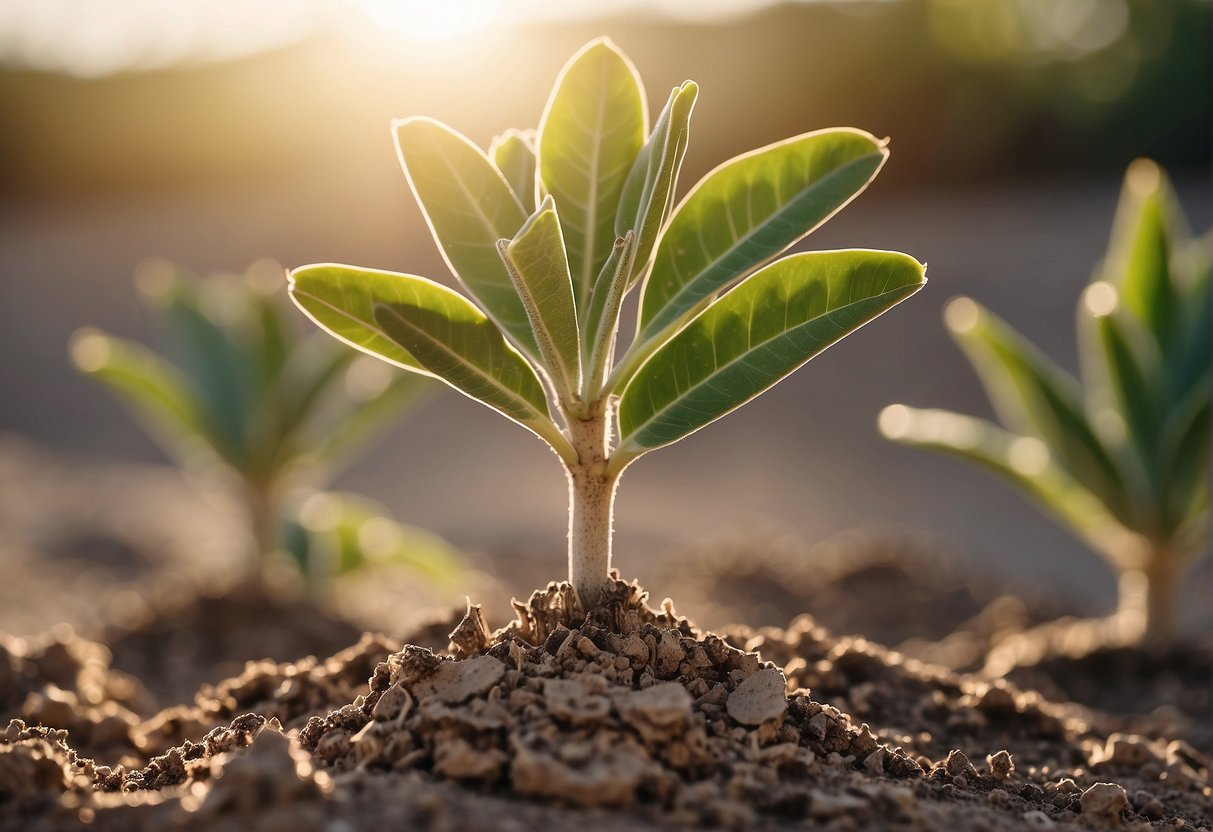
Seed Propagation
One method of propagating desert rose plants is through seed propagation. The seeds should be collected from a mature plant in the fall. The seeds should be sown in a well-draining soil mixture and kept moist. Germination typically occurs within 2-3 weeks. Once the seedlings have grown to a height of 2-3 inches, they can be transplanted into individual pots.
Cutting Propagation
Another method of propagating desert rose plants is through cutting propagation. The best time to take cuttings is in the spring or summer. Cuttings should be taken from a mature plant and allowed to dry for a few days. The cuttings should then be dipped in rooting hormone and planted in a well-draining soil mixture. The cuttings should be kept moist and placed in a warm, bright location. Roots should begin to form within a few weeks, and once the cuttings have established roots, they can be transplanted into individual pots.
Overall, both seed and cutting propagation are effective methods for propagating desert rose plants. It is important to ensure that the soil mixture is well-draining and that the plants are kept moist but not overwatered. With proper care and attention, desert rose plants can grow quickly and produce beautiful blooms.
Seasonal Care Tips

Summer Care
During the summer months, it is important to provide your desert rose plant with bright light and ample water. The plant should be placed in a location where it can receive at least six hours of direct sunlight per day. If the temperature rises above 90°F, it is recommended to move the plant to a cooler location.
To ensure healthy growth during the summer, it is essential to keep the soil moist. Water the plant deeply, but make sure the soil is not waterlogged. It is also advisable to fertilize the plant once a month with a balanced fertilizer.
Winterizing Your Desert Rose
As the winter months approach, your desert rose plant will enter its dormant period. During this time, the plant will require less water and light. It is recommended to reduce watering to once every two weeks and to move the plant to a cooler location where it can receive indirect sunlight.
If you live in an area where the temperature drops below 50°F, it is important to overwinter your desert rose plant. This can be done by moving the plant indoors to a location where it can receive bright light, but not direct sunlight. It is also important to reduce watering during this time and to avoid fertilizing the plant until the spring.
By following these seasonal care tips, you can ensure that your desert rose plant remains healthy and vibrant throughout the year.
Frequently Asked Questions
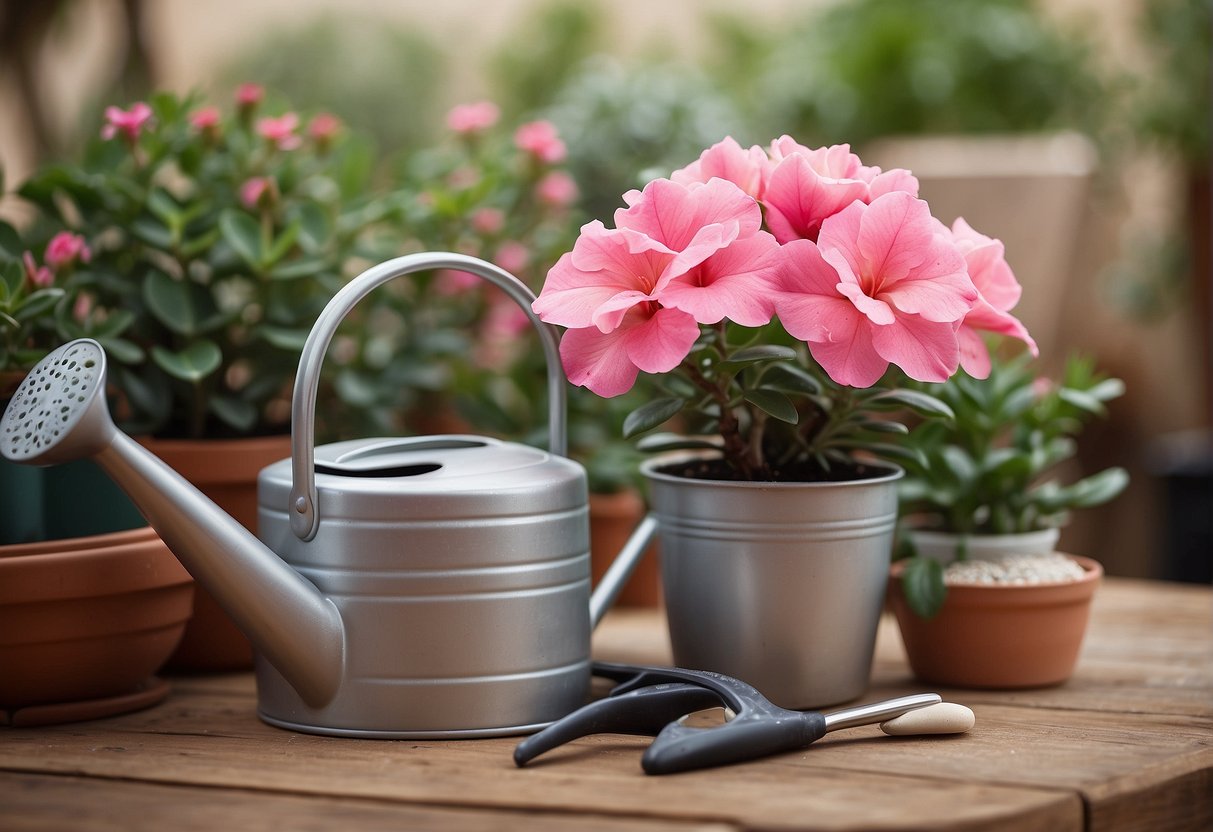
How should I water my potted desert rose for optimal growth?
Desert rose plants require well-draining soil and should be watered deeply but infrequently. Allow the soil to dry out slightly between waterings, and be sure to avoid getting water on the leaves or stem of the plant. Overwatering can lead to root rot and other issues, so it’s important to find the right balance.
What are the sunlight requirements for a healthy desert rose plant?
Desert rose plants thrive in bright, direct sunlight and should be placed in a location that receives at least six hours of direct sunlight each day. However, they can also be grown in partial shade, especially in hot climates where full sun exposure may be too intense.
Can desert rose plants thrive both indoors and outdoors?
Desert rose plants can be grown both indoors and outdoors, but they require different care depending on their location. Indoor plants should be placed in a sunny window and kept away from drafts, while outdoor plants should be protected from frost and extreme heat.
What type of fertilizer is best for nourishing a desert rose plant?
Desert rose plants benefit from a balanced, slow-release fertilizer that is high in phosphorus. It’s important to avoid over-fertilizing, as this can lead to excessive growth and reduced flowering.
Are desert rose plants toxic to humans or pets?
Desert rose plants are toxic to humans and pets if ingested, so it’s important to keep them out of reach. The sap of the plant can also cause skin irritation, so gloves should be worn when handling it.
What is the typical lifespan of a desert rose plant when properly cared for?
With proper care, a desert rose plant can live for many years and may even bloom year-round in warm climates. However, their lifespan can be affected by factors such as temperature, humidity, and disease.

